American ribbed tomato: description and cultivation in the open field
Not all tomato are of the same type, some are distinguished not only by their taste characteristics, but also by their interesting appearance. One of these tomatoes is American ribbed. It is notable for its extraordinary presentation of large, ribbed fruits. But for its cultivation, it is not enough to admire the external appearance, you need to know how to plant seeds for seedlings and the rules for caring for plants.
Content:
- Description and advantages of the variety
- Soil preparation, containers and planting seeds for seedlings
- How to care for seedlings?
- Terms and rules for transplanting seedlings into the ground
- Variety care recommendations
- Diseases and pests, the fight against them
Description and benefits of the variety
American ribbed is a variety bred by amateur breeders. He received his first recognition in the 1980s. Its color can vary in different colors - pink, yellow, orange, brown or traditionally red.
The variety is determinant, stopping in growth after the completion of the process of formation of fruits on the hands. Refers to standard types. It has limited growth parameters - up to 1.6-1.7 meters up, subject to being in greenhouse conditions and up to 1 m in an open area. The ripening rate of large fruits is average. Harvesting is carried out 115-125 days after the first shoots appear.
During growth, in order to obtain a high-quality harvest of large sizes, it is necessary to pinch, leaving only 2-3 main stems.
The rest is removed. In addition, when planting, you should immediately install a support and tie it up as you grow. To obtain gigantic fruits, it is recommended to remove excess shoots and form only 1 stem. The fruits are distinguished by a specific external appearance. When the variety is fully ripe, it has a flattened shape and large convex, rounded ribs. Taste characteristics are of a bright shade, do not deviate from the norms of tomato taste, do not have a pronounced or sweet aftertaste.
The standard weight of one ripe fruit averages about 170-200 grams. When initially harvested from a bush, tomatoes can reach up to 350-400 gr. everyone. When cut, the inside of the fruit is divided into ribs, at least 7 chambers, which contain about 6% of the dry structure, the rest is pulp and juice. Fully ripe fruits are recommended to be eaten after harvest in the form of salads or sliced or preserved for the winter. These fruits are not suitable for long-term storage.
The American ribbed tomato has some advantages over other varieties:
- Differs in the original appearance and shape of the tomato.
- Has a classic aroma and a juicy, rich taste.
- Possesses high protective properties against pests and various diseases.
- Not capricious, does not require constant nutrient moisture.
But the disadvantages of the variety are fastidiousness in terms of constant feeding and low yield, if the soil in which the tomato grows is not fertile and is not fed in time.
Soil preparation, containers and planting seeds for seedlings
The American ribbed tomato is planted with seeds for growing seedlings. To root the seed, you need to prepare the soil and a suitable container. The soil for seedlings needs fertile, well-permeable water and air. This is necessary so that the developing plants receive enough of all the nutrients.
You can prepare the soil for sowing seeds yourself or purchase it from a specialized store.
But if land is bought, then it should be checked acidityso that the sprouts grow comfortably. If you do not have the opportunity or desire, you need to mix humus, dry crushed peat, wood ash and ash, and you also need to add crushed egg shells and sod soil. In addition, superphosphate, urea (nitrogen) and potassium sulfate are added to the soil. This initial feeding will significantly affect the entire growth of young seedlings. If, after thorough mixing, the mixture turns out to be heavy, then 1 part of river sand can be added.
It is better to take care of the preparation of the soil in the autumn. This will make it possible during winter frosts to eradicate all pathogenic bacteria and pests that hibernate in the soil. If such an opportunity did not appear, then the prepared batch should be thoroughly disinfected: spill with a weak solution of potassium permanganate, and then warm up the earth in the oven.
After preparing the soil, you should tackle the container:
- For planting seeds for seedlings, it is recommended to take a low oblong flowerpot. A wooden box is best suited - it easily allows moisture and water to pass through, providing an opportunity for high-quality development of young tomato rhizomes.
- Peat cassettes, plastic cups and other containers that are at least 8 cm deep are also suitable for growing.
The last stage in the preparation of planting is the preparation of the planting material.
- You should purchase quality material in a specialized store or collect it yourself from the plant. It is not recommended to purchase from hands on the market. Instead of a varietal variety, you can buy ordinary seeds of a standard type of tomato.
- Before planting in the ground, the planting material should be disinfected by soaking it for 24 hours in a weak solution of potassium permanganate. After the elapsed time, it is necessary to place the planting material in a solution with a root growth stimulator for a period of 12 hours. Only then can you start sowing.
- When planting, it is immediately recommended to take into account that you should not sow the seeds in a continuous layer, then the seedlings will grow in a dense forest and it will be difficult to divide it without damaging the rhizomes. Therefore, it is worth worrying and plant the seeds at a distance of at least 2-3 cm from each other.
For planting, a shallow groove is made, up to 1-1.5 cm deep. Seeds are placed in it and carefully covered with soil. After that, it is necessary to carefully irrigate the soil from a spray bottle. It is not recommended to use watering from a watering can. A large flow of water can provoke leaching of the seed or its strongest burial. It is necessary to carry out the landing 2.5 months before the planned planting in open ground. Usually, the burial of seeds for seedlings is carried out at the end of March or in the first decade of April.
How to care for seedlings?
After the planting has been carried out, it is necessary to cover the flowerpot with a film or cover with glass. This is necessary in order to create greenhouse conditions inside the flowerpot for the fastest germination of sprouts. Place the container with the planted seeds in a warm room with good lighting... The optimum temperature of the content should not be lower than +22 .. + 25 C. Otherwise, the seedlings will germinate through the soil for a longer time.
In the period until the first timid sprouts appear, it is required to periodically air the mini-greenhouse by opening the film or removing the glass.The procedure should take no longer than 15-20 minutes. Watering is carried out if necessary. Shy sprouts appear under favorable conditions 5-7 days after planting. After that, the film or glass is removed from the plants. If left, then a black leg disease may appear on young seedlings, completely destroying the plant.
If there is not enough sunlight, then it is necessary to supplement the planting with the help of special phytolamps.
To do this, hang special lamps 10-12 cm above the flowerpot. As the seedlings grow, the lamp rises accordingly, so as not to provoke the development of a burn on delicate leaf plates. As they grow, so that the seedlings do not stretch out and fall on one side, the flowerpot is periodically turned the other side towards the sunlight. Watering is carried out as needed. It is recommended to introduce nutritious moisture under the root, so that water does not get on the delicate petals. Water for irrigation should be used specially separated, not cold, so that its temperature slightly exceeds or is at room level.
Top dressing can be introduced if the soil for the seedlings was not fertile, without the required amount of nutrients. Before making organic feeding, you should carefully examine the seedlings. If it is strong, powerful, then you should not additionally fertilize it. Otherwise, if the sprouts do not look healthy, be sure to feed them in full. When 3-4 full-fledged leaves appear in an American ribbed tomato, the seedlings must be transplanted - dive on separate flowerpots. During the transplantation of the bush to a new place of residence, the rhizomes are slightly chopped up. This is necessary in order to root system was powerful and developed even more strongly.
Terms and rules for transplanting seedlings into the ground
The transfer of seedlings to open ground is carried out at a time when the last spring frosts are not terrible. It is recommended to wait and plant after the return frosts in March.
Before moving the seedling bushes to a permanent place of residence, they are hardened. Initially, a flowerpot with plants is taken out into the open air for a period of no more than 15 minutes. Gradually, this period increases to 12 hours throughout the day. When the seedlings are left overnight, provided that the temperature at night is not lower than +5 .. + 7 C, the seedlings will be ready for transplanting into open ground.
How to properly plant seedlings in the ground:
- For American ribbed tomatoes, the best option for planting in the ground is considered to be a temperature of +10 C and above. It is desirable that the soil has time to warm up well. At this point, the seedlings will reach 2-2.5 months and will be fully ready for moving to permanent residence.
- Before planting, a recess is prepared, it should be 2 times larger than a clod of earth in which the tomato seedling is located.
- At the bottom, you need to pour nutrients, humus, a pinch ash... These fertilizers will be the start for high-quality growth and development of the tomato bush.
- Tomatoes are rooted in the open field, so that they do not interfere with each other. No more than 3 plants can be placed on 1 meter of land. It is better if the distance between the bushes is not less than 50 cm. The next row should be placed 40 cm from the previous row. This is necessary so that the shrubs have enough space, and it is convenient to take care of the plant and harvest.
Variety care recommendations
American ribbed - determinate tomatoes that do not grow more than 1-1.5 m in height. But in order for the tomatoes to grow well, it is necessary to carry out a garter and pinching.
During the rooting of young seedlings, you should immediately drive in a stake or build another support for young plants.
As it grows, the stem and branches are tied up.This is required so that the branches do not sink to the ground, do not get wet, do not rot, which naturally negatively affects the fruits that begin to rot in turn. After successful planting, it is necessary to withstand time for the plants to acclimatize. In the early days, the bushes shade slightly.
After planting, a number of rules for caring for American ribbed tomatoes should be followed:
- Watering - carried out as needed, but at least every other day. If the weather is sunny in summer and high temperatures are constantly observed, then it is impossible for the soil under the bush to dry out strongly, this threatens the death of the plant. It is recommended to introduce nutritious moisture either in the morning, before sunrise, or in the evening, after sunset. This is due to the fact that bright rays, when water hit the leaf plates, provoke the formation of burns on the greenery.
- Loosening - must be carried out as a crust forms on the surface. It is necessary to remove weeds that draw all nutrients from the soil, and to allow moisture and air to pass through the soil to the rhizomes.
- Mulching - in order to carry out loosening less often, straw, dried weeds or sawdust can be applied next to the base of the shrub. Such a cover of the soil will reduce watering, eliminate possible germination of weeds and retain moisture in the ground.
- Top dressing - is carried out 10 days after the rooting of plants in a new place. Must be entered organic fertilizers and minerals... The dosage of nitrogen should be controlled, due to the fact that its excessive intake to the roots can stimulate the growth of foliage instead of flower buds. After the first feeding, the next nutrient applications are made every 14-20 days.
- Lighting - it is necessary to plant the plant in sunny areas, where there is constant sunlight. The main thing is to protect shrubs from strong winds and drafts.
If all the conditions for care are met, then the plant will respond with a good harvest, which can reach up to 5.5 kg from one shrub. If any problems arise, they must be solved immediately, and not wait for further development.
Diseases and pests, the fight against them
American ribbed tomato is a disease-free tomato. It is a very resistant plant. Its main opponent is cracking. In order to eliminate this problem, it is necessary to reduce watering and monitor the moisture content of the soil.
Another disease that can affect a plant is dry spotting. If it appears on the leaves, the affected areas must be removed and burned. With a massive defeat of the bush, you should act on the greens chemical fungicides, such as Antracol or Tatu.
From tomato pests, a gnawing scoop and a spider mite are isolated.
They are capable of infecting the American ribbed tomato, regardless of the age category of the plant and its protection against diseases. If the parasites appeared on the shrub in small numbers and were noticed at first, until they had time to multiply in large numbers, they can be eliminated by manually removing them from the plant. You can also use folk remedies such as garlic or soap-and-ash solution. Otherwise, pest control is carried out through exposure chemical insecticides.
In order for American ribbed tomatoes to develop well, growing to an optimal volume and ripening with high quality, certain conditions must be met:
- Perform all transplanting or pruning procedures at a time when the bush is dry.
- Apply fertilizers only after slight irrigation of the soil.
- Immediately remove weeds, bruised and diseased tomato bushes from the territory.
- Do not plant tomatoes or tomatoes nearby.
- Land on the ground on which they were previously placed carrot, legumes or cucumbers, dill and parsley.
If you control the condition of fruits and plants, then neither diseases nor pests can harm the shrub. Thus, the American ribbed tomato is an interesting variety that boasts an interesting appearance. If all the rules for planting and growing seedlings are followed, then the shrub in the open field will give a bountiful harvest, saturated with excellent taste. The main thing is to monitor the plant and if any problems arise, immediately eliminate the diseased bush. Otherwise, there is a possibility of infection of the rest a tomato.
More information can be found in the video:




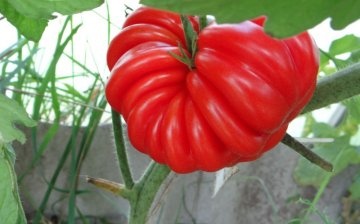



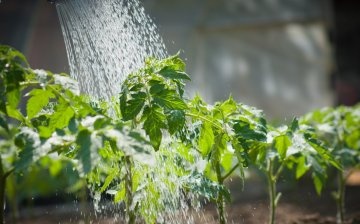
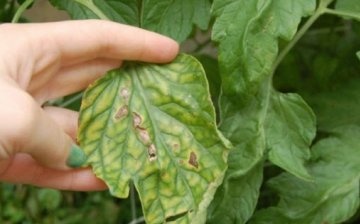








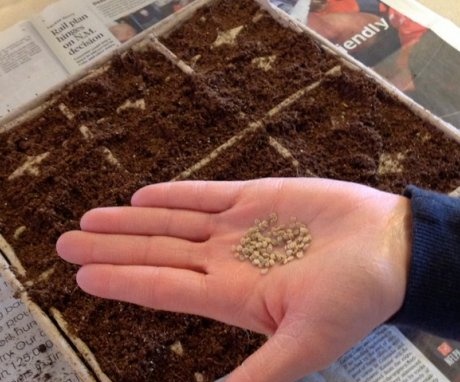

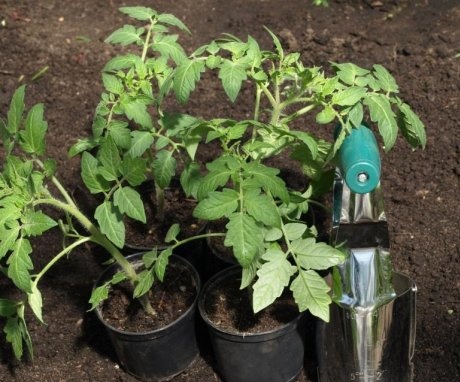
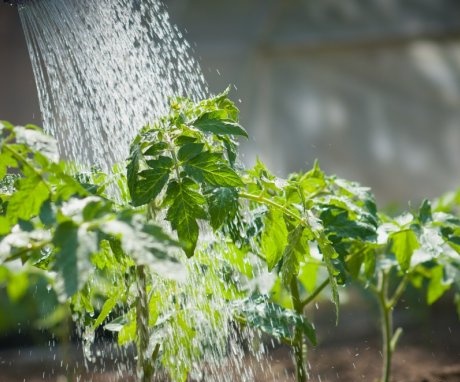
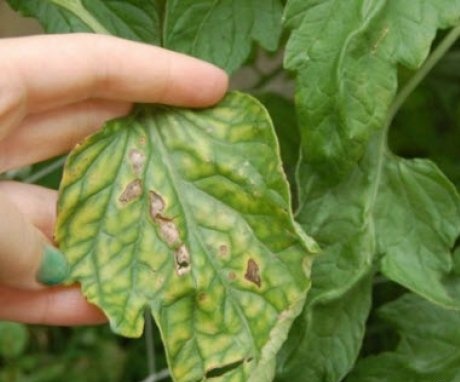
I have never heard of this kind of tomato before. Now you will definitely need to look for seeds in our stores. And what is the best way to feed such "tall" varieties at the seedling stage in order to get strong plants?
Dear Katyushechka! We tried to plant the American ribbed tomato on a plot in the garden. Grew up fine, but we planted it in a greenhouse. The taste is fleshy and full-bodied. Plant you too!
We have not yet had this kind in the garden. I would leave only two stems, not three. In addition, we put a peg for tying tomatoes one on two, or even four bushes. The photo in the article shows watering tomatoes on the leaves, we always water them at the root. I don't know if we are doing the right thing.